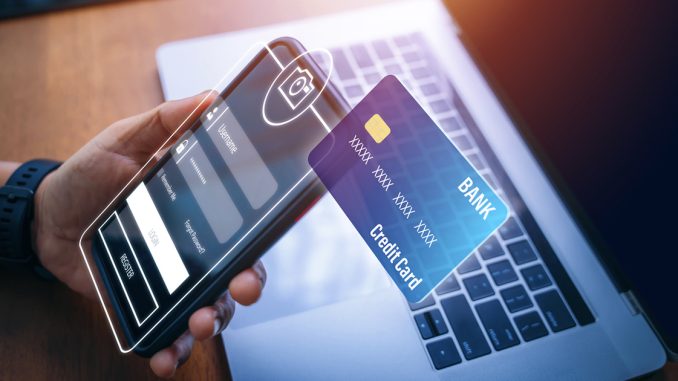
As technology advances, so do our payment methods: from the days of cash and checks to contactless payments using biometrics today. The development of payment technologies is a microcosm of all those great movements in consumer lifestyle changes–from making humans develop some habits to world-shaking advances which technology itself provides rights down on payment technologies.
The Era of Payment Technologies and Payments
Historically, payments were made in cash using coins and paper notes. The invention of checks in the 17th century constituted a significant step forward for trade, as it allowed money to be transferred without handling actual coin. Even then however, it wasn’t until the 20th century that payment technology truly took off. The earliest widely-used universal card–the Diner’s Club Card, which dates from 1950–enabled society to begin moving away from cash payment altogether. Customers were now able buy on their wants-ahead of time.
The Era of Electronic Payments
Once the international economy was opened up, money transfer networks grew more efficient. Since the 1970s and 1980s, electronic payment systems have come into being. Now there is something called an Automated Clearing House (ACH) transaction of point-of-sale (POS) equipment. These changes have meant that opportunities for both businesses and their consumers to use electronic means to process their transactions; one’s own town no longer need be limited by the long hours when people carry on them lots of cash. Debit cards made commitments even easier so now customers could draw directly from their account in the bank.
In The 2000s, the arrival of contactless payments heralded a new era in payment systems. Touchless payment systems become possible with the widespread use of Near Field Communication (NFC), which allows devices to communicate within a short reach wirelessly. As a result, NFC technology is changing the way people go shopping or take a bus home. I took advantage of contactless payment technologies like RFID-enabled credit cards or mobile payment solutions.
Apple Pay and Google Pay, preferring those two because they are so quick and convenient. I haven’t looked back since then, and in fact I hardly ever see cash or cheques in my hand now. The new way of online payment offers customers convenience with a human touch: you simply use your card to pay. The fact that it also cut shops’ logging times at POS machines will send them on their way to new successes in marketing in due course; not to mention there are less lines left on your fingers too once for all. In the Era of Covid-19, with its emphasis on all things touchless, this is welcomed by those who are searching for a healthy route towards finance.
It is only further accelerating the adoption of contactless payments. Mobile Wallets Going Mainstream Mobile wallets have greatly affected the payment landscape. These applications store your information securely on the cell phone and let you pay without using a plastic lead to interfere in each transaction or offshoot. Today’s mobile wallets provide a wide range of payment methods, from credit cards to frequent flyer accounts to easy access on the home screen. Next folks use personal mobile wallets like PayPal and Venmo to send money again.
Biometric Transactions: New Horizons for Business With the advent of the digital era, people began to pay attention to security problems in commerce, and so Biometric Payment through Mobile Phone Payment Machines was born. These systems utilize unique biological traits such as fingerprints, facial recognition and iris scans to verify users and spill the transaction through. On this basis the level of security we experience not only gives protection from card counterfeiting or skimming, but also reduces risks involved with physical theft and fraud.
Biometric fingerprint verification was first seen in a smartphone and then linked to the payments system. A spate of developments on the scores of fingerprint identification and FACE ID by Apple’s smartphones got my boss thinking and soon thereafter, over ten thousand machines in the world were able to offer interfaces taking in both Facial recognition scans as well interface fingerprint verification, thus it became feasible for users simply prove who they are by scanning an interface- any any machine can make secure payments to another at once.
The Future of Payment Technologies
The future of payment technology is expected to continue along those lines. With those kinds of technology having emerged as early as now, the finance field has already shifted under its impetus. Blockchain and crypto-currencies are now alarmed about new and reliable modes for transaction; when these implementations are found in more places across society, what we’re dealing with is not just technological change but also a kind of financial liberalization that will accelerate based on our everyday behaviors. However harder it be to break through the ensuing bottleneck will come when normal users and businesses start willingly accepting these manners of solution into their daily lives: There’s no doubt that our entire process for payment can only get faster, safer (because it’s built into every step) at all levels of business management after this.If for example artificial intelligence and machine learning are combined with the existing payment systems, they might be able to improve user experience and fraud detection by selecting payment methods based on a user’s behavior.
Conclusion
The on-going evolution from cash to walletless, biometric transactions highlights the constant interplay between technology, consumer desire to be free from having to bother about inflation and security in general. But while we still develop new means of payment, one fact appears all the more certain: the future terrain in finance will be one dominated by innovation combined with ease. And as such technologies mature, we should anticipate a more fluent, secure and effective payment space that meets the demands of an ever-more digital society.